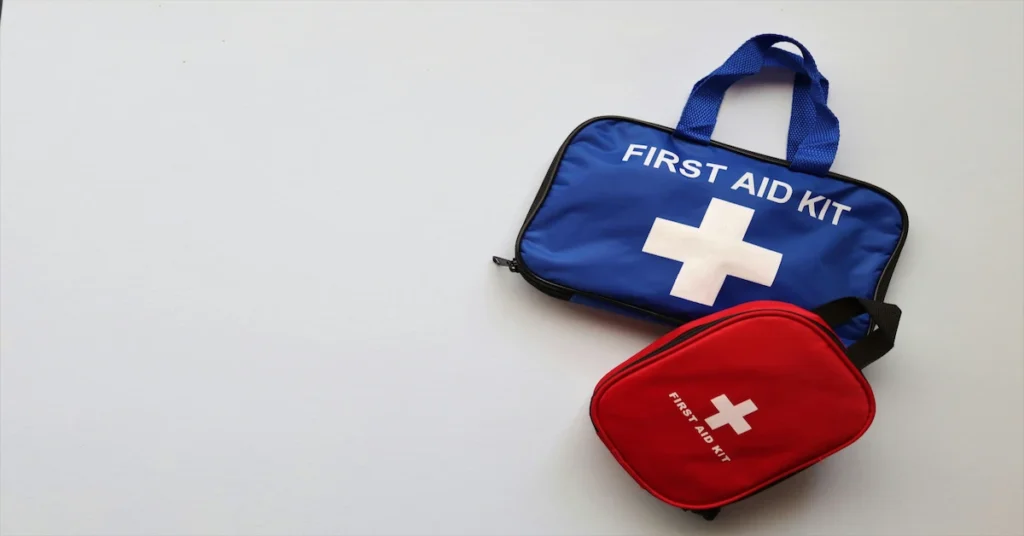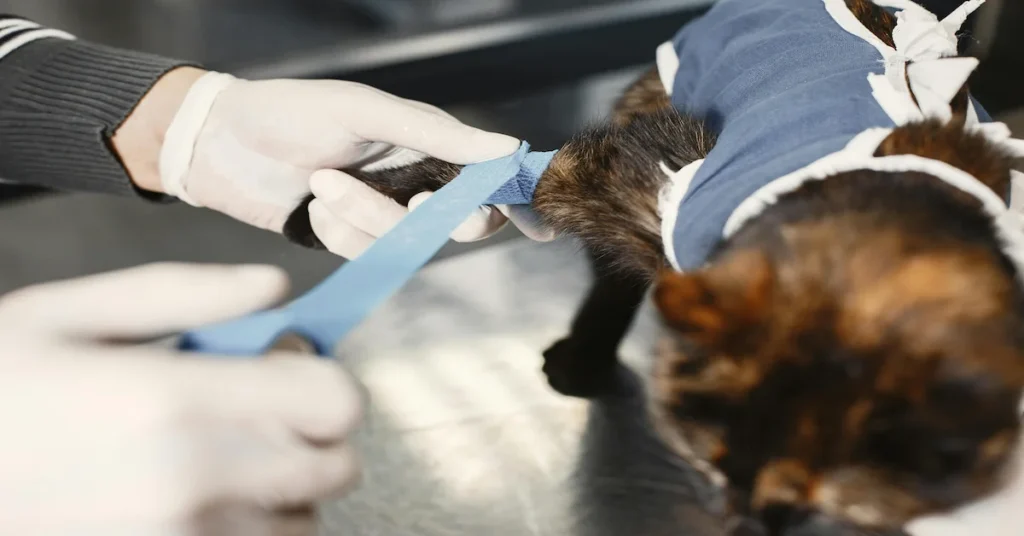Emergencies involving pets can strike without warning a sudden accident, a toxic ingestion, or a high fever. In those critical moments, knowing how to respond quickly and confidently can save your pet’s life. While veterinary professionals should always handle serious medical conditions, pet owners must understand basic first aid principles to stabilize their pets before expert care is available.
This guide will walk you through the essentials of pet first aid: from building your own pet emergency kit to handling specific situations like choking, wounds, heatstroke, and poisoning. These first-line responses can make the difference between life and death.
Why Pet First Aid is Crucial for Every Pet Owner

Unlike humans, pets cannot articulate pain or discomfort. As a result, pet emergencies can go unnoticed until they escalate. Your ability to recognize danger signs and react swiftly is critical. According to the American Veterinary Medical Association (AVMA), immediate care through basic first aid can reduce long-term complications and, in many cases, save lives.
Even if you live close to a veterinary hospital, the first few minutes after an emergency are vital. Bleeding, breathing problems, and trauma require fast action. First aid is not a substitute for professional treatment, but it provides an essential bridge between the incident and veterinary help.
10 Common Pet Emergencies and How to Handle Them

Let’s look at the most frequent types of pet emergencies and how to respond effectively:
1. Severe Bleeding or Open Wounds
Symptoms:
- Continuous bleeding
- Visible gashes or punctures
- Limping or sensitivity to touch
What to Do:
- Muzzle your pet gently to prevent biting.
- Apply pressure to the wound using sterile gauze or a clean cloth.
- Wrap the injured area loosely but firmly.
- Elevate the injured limb if possible.
- Head to the vet immediately if bleeding does not stop within 10 minutes.
2. Choking
Symptoms:
- Gagging or retching
- Excessive drooling
- Difficulty breathing
- Pawing at the mouth
What to Do:
- Open your pet’s mouth carefully and look for visible obstructions.
- If you can see and safely reach the object, use tweezers to remove it.
- If the pet is unconscious or not breathing, perform a pet version of the Heimlich maneuver by giving sharp thrusts to the abdomen.
- Always follow up with a vet visit, even if the object is dislodged.
3. Heatstroke
Symptoms:
- Excessive panting
- Bright red or pale gums
- Vomiting or diarrhea
- Collapse or seizures
What to Do:
- Move your pet to a shaded or air-conditioned space.
- Wet the body with cool (not cold) water and place a fan nearby.
- Offer small sips of water but do not force them.
- Take your pet to the vet immediately. Heatstroke can be fatal if untreated.
4. Poisoning or Toxic Ingestion
Symptoms:
- Vomiting or drooling
- Sudden lethargy
- Seizures
- Unusual behavior
What to Do:
- Identify the toxic substance (plant, chocolate, cleaning product, etc.).
- Do not induce vomiting unless instructed by a vet.
- Call your vet or the Pet Poison Helpline at 1-855-764-7661.
- Bring the container or sample of the substance to the vet for analysis.
5. Seizures
Symptoms:
- Loss of consciousness
- Jerking limbs or twitching
- Foaming at the mouth
- Unresponsive staring
What to Do:
- Do not attempt to restrain your pet.
- Clear the surrounding area to prevent injury.
- Time the seizure and keep your pet calm afterward.
- Visit the vet as soon as possible to identify the cause.
6. Fractures or Broken Bones
Symptoms:
- Limping or inability to use a limb
- Swelling or visible deformity
- Vocalizing in pain
What to Do:
- Avoid moving the broken limb.
- Wrap your pet in a towel to limit movement.
- Place them in a carrier or on a board for transport.
- Seek veterinary care immediately for imaging and proper treatment.
7. Burns
Symptoms:
- Blisters or red, raw skin
- Crying when touched
- Avoiding being handled
What to Do:
- Run cool (not cold) water over the affected area.
- Cover loosely with a clean cloth.
- Do not apply ointments unless directed by a veterinarian.
- Burns can worsen quickly, so prompt vet care is crucial.
8. Eye Injuries
Symptoms:
- Excessive tearing
- Squinting
- Swollen or cloudy eye
What to Do:
- Avoid touching the eye.
- Use sterile saline rinse if available.
- Keep your pet calm and restrict movement.
- Head to the vet for examination. Eye injuries can lead to permanent damage.
9. Difficulty Breathing
Symptoms:
- Open-mouth breathing
- Labored or shallow breaths
- Blue-tinted gums or tongue
What to Do:
- Keep your pet as calm as possible.
- Do not offer food or water.
- Ensure a cool, ventilated environment.
- Get to a veterinary hospital immediately breathing issues can escalate rapidly.
10. Allergic Reactions
Symptoms:
- Facial swelling
- Hives or rash
- Vomiting or diarrhea
What to Do:
- Remove the suspected allergen if possible.
- Contact your veterinarian; they may instruct you to administer antihistamines.
- Severe reactions (like anaphylaxis) require emergency care.
What to Include in Your Pet First Aid Kit
Keeping a pet-specific first aid kit at home and in your car can save valuable time during an emergency. Here’s what your kit should contain:
- Sterile gauze and non-stick bandages
- Scissors and tweezers
- Muzzle or soft wrap (for safety)
- Digital thermometer
- Saline solution (for eyes or wounds)
- Antiseptic wipes or spray (pet-safe only)
- Hydrogen peroxide (only if instructed by a vet)
- Medical gloves
- Pet first aid manual
- Emergency contact list (vet, poison control, emergency hospital)
Check your kit every few months and replace expired items.
Training for Pet First Aid
Numerous online platforms and local animal hospitals offer pet first aid and CPR courses. These classes teach you how to:
- Perform CPR on dogs and cats
- Handle trauma like fractures or burns
- Manage choking and poisoning incidents
- Recognize signs of shock or stroke
Certification can be particularly useful for pet sitters, groomers, and trainers.
When to Go Straight to the Vet
While first aid is helpful, there are situations where you must seek professional help immediately:
- Loss of consciousness
- Uncontrollable bleeding
- Difficulty breathing
- Ingestion of known poisons
- Seizures lasting more than five minutes
- Traumatic injuries or broken bones
When in doubt, always err on the side of caution and consult your vet.
Conclusion
Emergencies can happen at any time, and being prepared is your first responsibility as a pet parent. Basic first aid knowledge helps you stay calm and take action during those critical first moments. While it doesn’t replace veterinary care, it gives your pet a fighting chance.
Every second counts when your pet’s life is in danger. Learn, prepare, and stay ready. For more professional advice, refer to the AVMA’s Pet First Aid Guide for comprehensive emergency care tips and training resources.
Frequently Asked Questions (FAQs)
1. What is pet first aid and why is it important?
Pet first aid refers to the immediate care given to a pet during an emergency before professional veterinary treatment is available. It is crucial because it helps stabilize your pet, prevent conditions from worsening, and increases the chances of recovery in life-threatening situations.
2. What should I do if my dog is choking?
If your dog is choking, try to open its mouth carefully and check for a visible object. If you can safely remove it with tweezers, do so gently. If not, use gentle abdominal thrusts (similar to the Heimlich maneuver) and seek emergency veterinary help immediately.
3. What should be in a pet first aid kit?
A complete pet first aid kit should include sterile gauze, non-stick bandages, tweezers, digital thermometer, antiseptic wipes, saline solution, hydrogen peroxide (only if advised by a vet), a muzzle, gloves, and emergency contact numbers including your vet and poison control.
4. Can I use human first aid supplies on pets?
Some human first aid supplies like bandages, gauze, and saline solution can be used for pets. However, never give human medications to pets unless specifically directed by a veterinarian, as many drugs are toxic to animals.
5. How do I know when to take my pet to the emergency vet?
You should take your pet to the emergency vet immediately if they are unconscious, have difficulty breathing, suffer from uncontrolled bleeding, experience seizures, or ingest toxic substances. If in doubt, always call your vet for guidance.
6. Is it possible to take a pet first aid course?
Yes, many organizations and veterinary clinics offer pet first aid and CPR training both online and in-person. These courses provide hands-on knowledge about how to manage emergencies and can be especially valuable for pet parents, sitters, and trainers.
7. What do I do if my pet has been poisoned?
If you suspect poisoning, remove the source immediately and contact your vet or the Pet Poison Helpline at 1-855-764-7661. Do not induce vomiting unless specifically instructed by a veterinary professional.
8. Can I perform CPR on my pet at home?
Yes, CPR can be performed on pets, but the method differs based on their size and species. You should only attempt it if your pet is unresponsive and not breathing. For safety and accuracy, it is recommended to take a certified pet CPR course.
9. How often should I check or update my pet’s first aid kit?
You should check your pet first aid kit every 3–6 months. Make sure all items are in good condition, sterile, and not expired. Replace used or outdated supplies to ensure you’re always prepared in an emergency.
10. Where can I learn more about pet first aid?
For expert guidance and educational resources, visit the American Veterinary Medical Association’s official page on pet first aid. It provides up-to-date recommendations and emergency response information for pet owners.